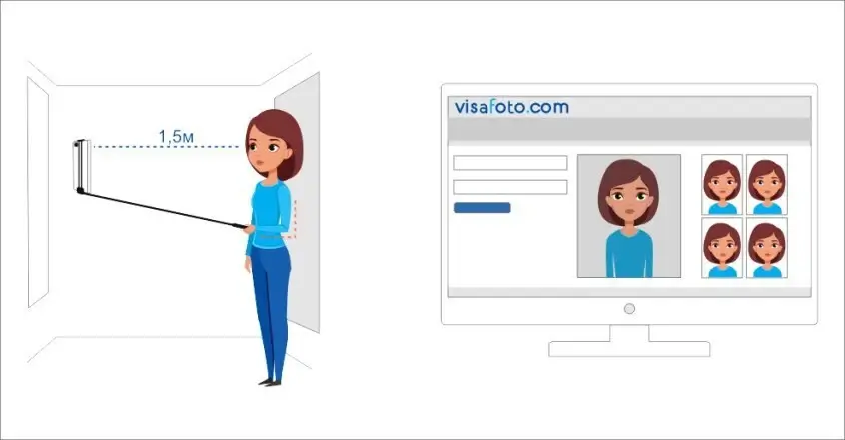New U.S. Student Visa Rules 2025: Key Changes & How to Apply
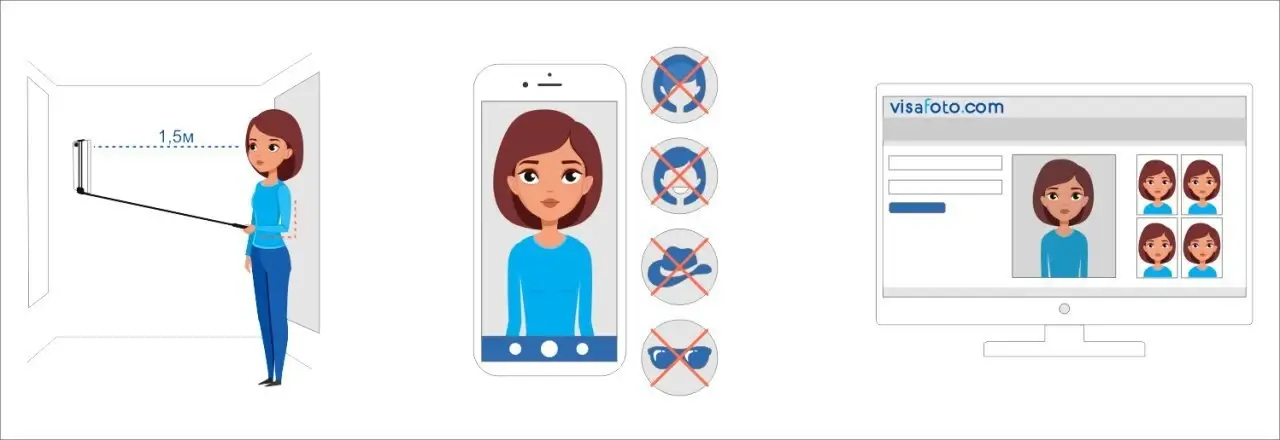
The U.S. remains one of the top destinations for international students, but navigating its visa process requires staying updated on the latest regulations. In 2025, several key studies in the U.S.A. visa changes will affect F-1, M-1, and J-1 visa applicants, from stricter social media checks to revised financial documentation rules. Whether you're a prospective undergraduate, graduate student, or exchange visitor, understanding these updates is crucial for a smooth U.S. student visa application process in 2025 and later.
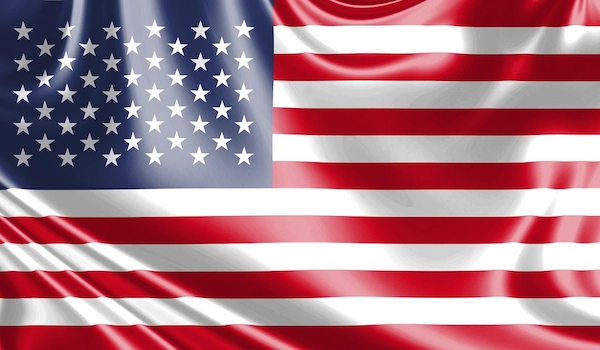
In this article, we break down the latest U.S. student visa news and what it means for applicants.
Table of contents
- Major Changes Effective June 2025
- Updated U.S. Student Visa Requirements (F‑1, M-1, J-1)
- Step‑by‑Step Student Visa Application Process
- Online U.S. Visa Photo Maker
- U.S. Visa Photo App
- U.S. Student Visa Fees
Major Changes Effective June 2025
The U.S. student visa process is undergoing significant updates in 2025, with new policies affecting international students worldwide. These changes aim to enhance security, streamline vetting procedures, and potentially alter how long students can stay in the country.
Among the USA student visa June 2025 updates are:
Resumption of visa appointments
What is the current status of a U.S. student visa? After the student visa pause beginning May 27, 2025, U.S. embassies and consulates resumed scheduling F, M, and J student and exchange visa appointments on June 18. F‑1 students targeting campuses with fewer than 15 % international students are being prioritized for faster service. However, delays may still persist due to backlogs and enhanced screening protocols. Students are encouraged to apply early, as wait times vary by location and season. Notably, new appointments are contingent on compliance with updated F-1 visa requirements, including expanded visa background checks in the USA.
Expanded online background checks
The June 18 State Department cable mandates a full “comprehensive and thorough vetting” of every applicant’s online presence, not limited to social media but also including public databases, transcripts, or test scores. Consular officers must follow a two-step process: first, the standard eligibility interview; if that’s passed, they issue a 221(g) administrative hold to conduct this online review, documenting all findings with detailed notes and screenshots.
Social media transparency
All F, M, and J applicants are now required to make their social media profiles publicly accessible — covering platforms like Facebook, X, Instagram, LinkedIn, and TikTok — and provide handles from the past five years. The aim is to detect “any indications of hostility towards U.S. citizens, culture, government, institutions or founding principles,” along with any support for terrorism, antisemitism, or political activism. Accounts hidden from review may be deemed evasive and negatively impact visa outcomes.
Term‑of‑study limits (Proposed)
Emerging discussions suggest a push to introduce term-of-study limits within the student visa framework. While not yet finalized, proposals under consideration could restrict the duration of non-immigrant status to ensure alignment between visa length and program timelines. Though no formal announcement has been made, education policy groups and lawmakers are reviewing options, driven by concerns over compliance and the risk of visa overstay. This remains a “proposed” measure, and its implementation timeline is not yet determined.
New US student visa ban
Starting June 9, 2025, the U.S. introduced a travel ban that impacts student visas (F, M, and J) for citizens of 19 countries:
Full restriction
No new student visas are being issued to nationals of 12 countries: Afghanistan, Burma/Myanmar, Chad, the Republic of the Congo, Equatorial Guinea, Eritrea, Haiti, Iran, Libya, Somalia, Sudan, and Yemen.
Partial restriction
Visa processing for F, M, and J categories is also paused for 7 other countries: Burundi, Cuba, Laos, Sierra Leone, Togo, Turkmenistan, Venezuela.
This ban applies only to individuals outside the U.S. who did not have a valid visa as of June 9, 2025. Those already in the U.S. or with visas issued before that date are not affected.
There are limited exceptions. For example, in certain humanitarian situations or for dual citizens traveling with a passport from a non-restricted country, but approved waivers remain rare.
Why can a U.S. student visa be revoked? There are several reasons behind the U.S. student visa revocations. Common causes include breaking visa rules, providing false or incomplete information during the application process, or if U.S. authorities believe a student’s presence could harm foreign policy interests.
In 2025, student visa revocations reportedly affected individuals involved in peaceful protests, those facing minor legal issues, or even students listed as witnesses in criminal cases. These examples highlight how even indirect involvement in legal matters can put your visa status at risk.
Updated U.S. Student Visa Requirements (F‑1, M-1, J-1)
To qualify for a student visa to the United States, you must first be admitted to a recognized college or university in the country. Once you've secured your place, you'll need the following:
- A passport that remains valid for at least six months after your planned departure date.
- Confirmation page for the DS-160 form.
- Either an I-20 or DS-2019 form.
- Proof that the SEVIS fee has been paid.
- Academic records and exam results.
- Evidence of financial ability to cover expenses. The U.S. student visa bank statement requirement is that you must have sufficient funds to cover at least the first year’s tuition, living expenses, and other costs. Your bank statement should usually show between USD 20 000 to USD 40 000, though for some schools or locations, the required amount may be as high as USD 60 000. The exact figure depends on your university and where it’s located.
- A photo that meets U.S. visa requirements.
- A list of all social media accounts used in the past five years.
Step‑by‑Step Student Visa Application Process
To apply for the U.S. student visa in 2025, follow these steps:
Confirm your program
Your first step is to secure admission to a U.S. institution certified by the Student and Exchange Visitor Program (SEVP). Only SEVP-approved schools can issue Form I‑20 (for F‑1/M‑1 visas) or Form DS‑2019 (for J‑1). The form will include essential details, like program start/end dates, estimated costs, and your SEVIS number, so ensure accuracy before submission.
Prepare proofs of funding
You’ll need to document sufficient funding to cover tuition, living expenses, and travel. Acceptable proof includes bank statements, scholarship letters, or sponsor commitments. Universities typically expect proof for at least the first academic year and sometimes full program duration. Missing or weak financial evidence is a common cause for delays or denials.
Set up SEVIS and pay the I‑901 fee
Once you have your I‑20 or DS‑2019, pay the SEVIS I‑901 fee. It’s USD 350 for F‑1/M‑1 and USD 220 for J‑1 applicants. After payment, print the receipt, as you’ll need it at your visa interview.
Prepare a passport-sized photo
During DS‑160 completion, you'll upload a digital visa photo that meets State Department standards: color JPEG, sRGB, square (600×600 to 1200×1200 px), 24-bit color. If the upload fails, bring a printed photo to your interview per embassy instructions.
Complete DS‑160 & schedule interview
Create and submit the DS‑160 at the US State Department’s CEAC portal. Save and print the confirmation barcode, critical for scheduling and interview attendance. This form covers personal data, program details, travel history, and social media handles. DS‑160 filing triggers the consular interview scheduling, and DS‑160 is mandatory for all non-immigrant visas.
Update social media
According to the new F-1 visa rules 2025, applicants must disclose all social media accounts used in the past five years and set them to “public” before the interview. Carefully audit your social media and online presence from the past five years. Remove or hide any content that might be interpreted poorly, but don’t alter handles during the F-1 visa application process, as it could look deceptive.
Be ready for questions on background and online activity
During the USA student visa interview process, expect standard questions about your study program, financial capability, and future plans. Be especially prepared for deeper scrutiny of your online and social media history, and disclose all social media usernames during your visa interview. Consular officers may place your case on administrative hold under section 221(g) to conduct extensive background checks via social media and public records. Honest and consistent answers are vital. Discrepancies between your interview, DS‑160, and online presence can raise concerns.
Online U.S. Visa Photo Maker
Looking for a fast and reliable way to get a U.S. visa photo that meets all official rules? Try Visafoto.com! This online photo service has been creating ID and visa pictures since 2013, and boasts a 99.7% acceptance rate from authorities around the world.
Just snap a photo of yourself against a plain white wall using your phone or camera, and upload it to the site. Visafoto will automatically adjust the background, size, lighting, and other technical details to match U.S. visa photo standards.
Here's an example of the photo you can upload:
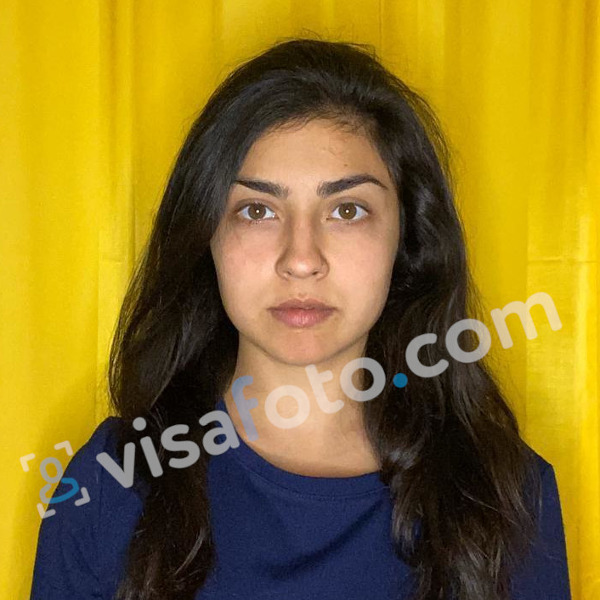
You’ll receive two versions: one digital file for online use and another version ready to print.
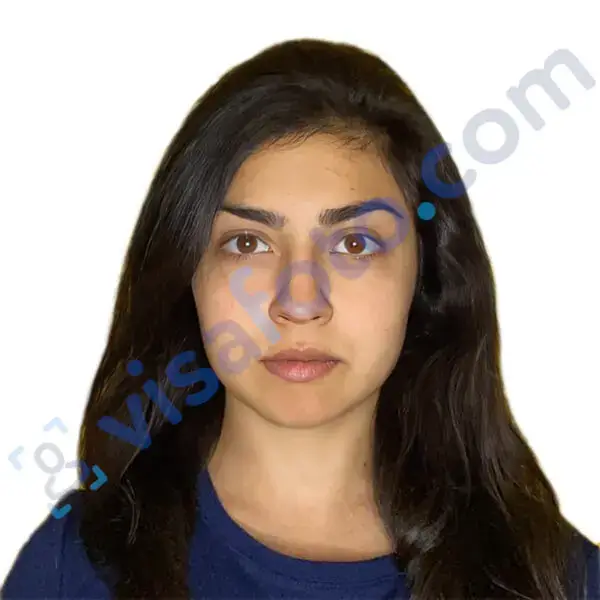
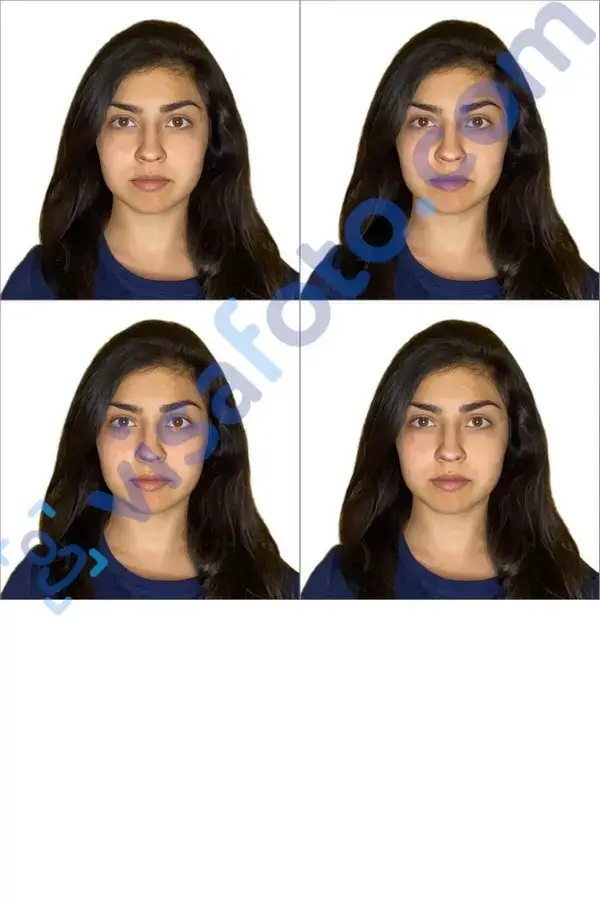
Not happy with how it looks? You can ask for a free replacement. And if your photo is ever rejected, you’ll get your money back.
U.S. Visa Photo App
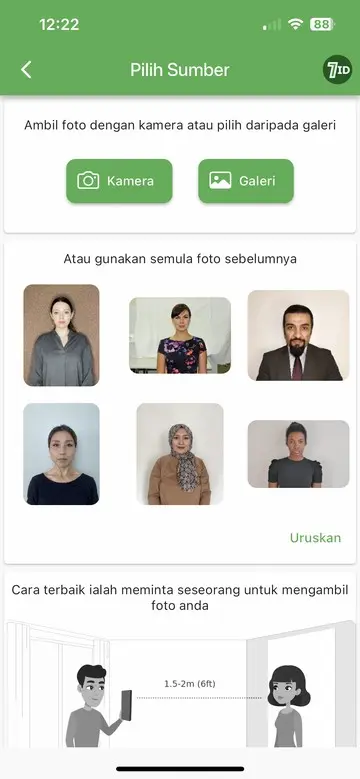
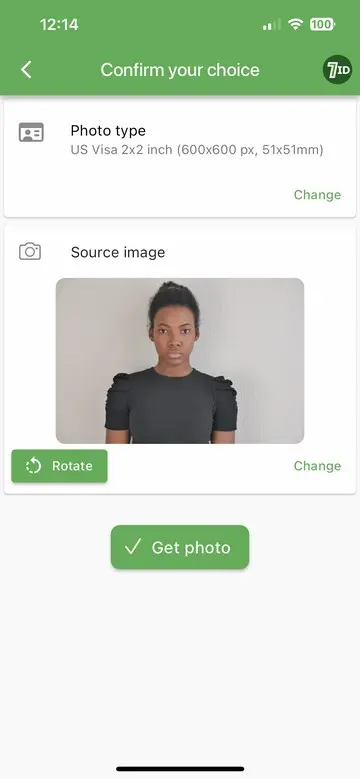
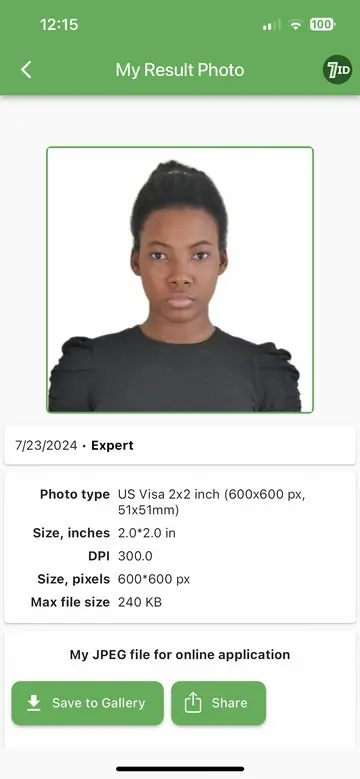
Prefer using your phone? Check out the 7ID App by Visafoto — a handy tool for taking U.S. visa, passport, and ID photos right from your smartphone. It works on both Android and iPhone.
All you have to do is upload your picture, choose the document type and country, and the app will automatically format your photo to meet official requirements. It will fix the size, background, face position, and everything else needed for approval.
You’ll get a digital photo for online applications, plus a print-ready template that fits popular paper sizes like 4×6, A4, A5, or B5. And if you run into any issues, the support team is available 24/7.
U.S. Student Visa Fees
Here are the main fees you’ll need to pay for your student visa:
SEVIS I-901 fee:
- F-1 and M-1 visas: USD 350.
- J-1 visa: USD 220.
This fee goes toward registering your details in the Student and Exchange Visitor Information System (SEVIS). You’ll need to pay it after receiving your Form I-20 (for F-1/M-1 visas) or DS-2019 (for J-1 visa).
Visa application fee (also known as the MRV Fee):
- F-1, M-1, and J-1 visas: USD 185.
This fee is required when you submit your DS-160 application form and book an appointment for your visa interview at the U.S. Embassy or Consulate. It's non-refundable, even if your visa is not approved.
Visa issuance reciprocity fee (if applicable):
Some applicants may also need to pay an extra fee based on their country of citizenship. This fee isn’t charged to everyone — many nationalities are exempt. You can check the exact amount (if any) on the Student Visa page of the U.S. Department of State website.
Good luck with your U.S. student visa application!
